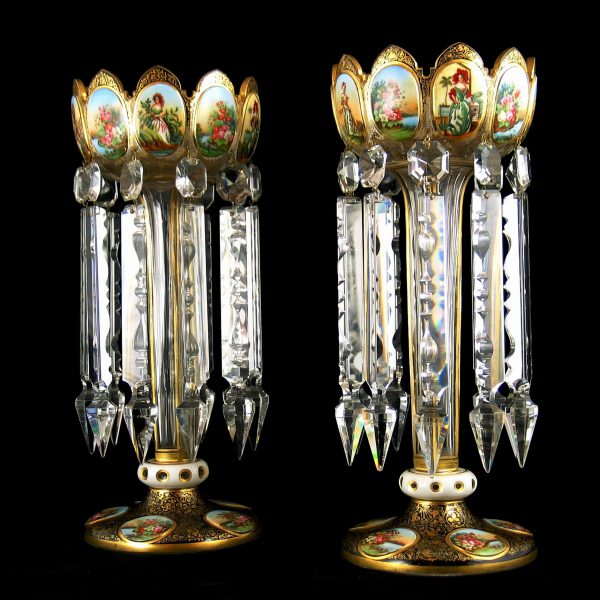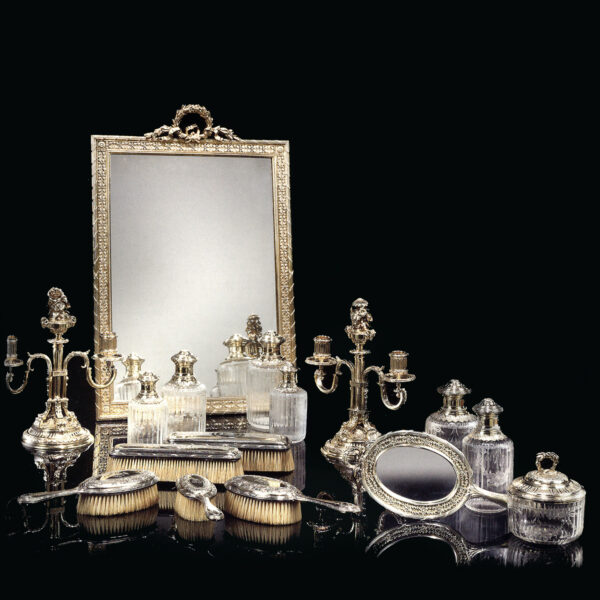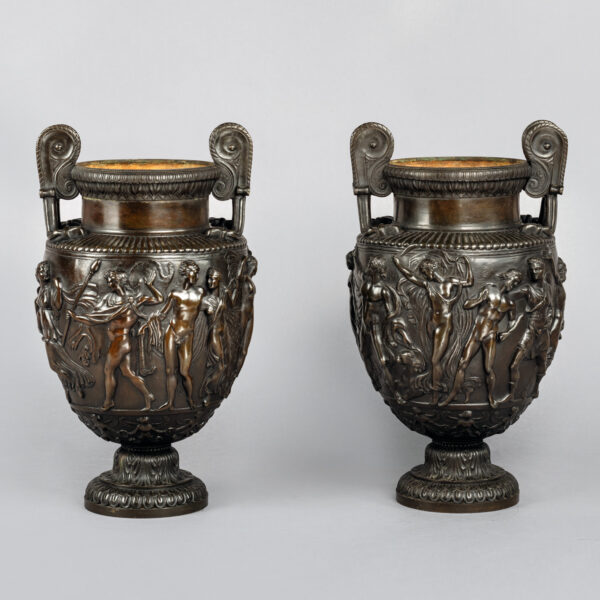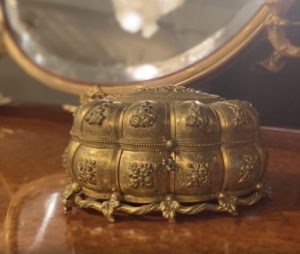A Pair of Green and White Overlay Glass Lustres
£2,600
A Pair of Green and White Overlay Glass Lustres. Originally Bohemian Gothic Glassware was made of green glass known as 'forest' glass. In the Renaissance...
Dimensions
Height: 27 cm (11 in)Diameter: 15 cm (6 in)
Description
A Pair of Green and White Overlay Glass Lustres.
Originally Bohemian Gothic Glassware was made of green glass known as ‘forest’ glass. In the Renaissance period, the glass making production was taken over by Venice for a time, starting and developing the technique of enamelling. In the Bohemian environment, this technique was quickly modified into a Renaissance style of painting, which contrasted with the refined decorations of Venetian glass.
At the beginning of the Seventeenth Century, Italian and German cutters came to the court of King Rudolf II in Prague. Thanks to these artists, the techniques evolved and brought a new artistic style, opening the perception of glass as an artefact. The success was such that in the early Eighteenth Century, the Czechs gained control over the world’s glass markets. Hand made and hand cut coloured lead crystal helped to change the deep rooted view of the production using transparent glass, which culminated in the neo-classical style.
Frequent motifs included coats of arms, figural scenes from everyday lives, as well as portraits of rulers.Business centres known as ‘Bohemian Houses’ could be found in the twelve largest European cities, thirty eight ports and outside of Europe in Baltimore, Beirut, Cairo, Mexico, New York and Smyrna. Nevertheless, at the beginning of the Nineteenth Century, the production of traditional Bohemian crystal went down because of the discovery of a new product – clear English lead crystal.The new English clear lead crystal glass could be melted down at a lower temperature, engraved and cut easier, which resulted in a lower cost.
The Czechs did not respond fast enough to the market demand for the lead crystal and lost a large market share and this led to the bankruptcy of many of the old Bohemian glassworks.One surviving traditional Bohemian glasswork, Bedrich Egermann, a very innovative glass manufacturer, came up with the idea of coloured Bohemian glasses (opals, opalines, lithyalines, hyalites etc.) which later inspired the glass production of the second half of the Nineteenth Century, and especially the Art Nouveau and modern trends of glass art in the Twentieth Century. Bohemian glass triumphed in the world markets once again.
Date
Circa 1880
Origin
Bohemia
Medium
Glass
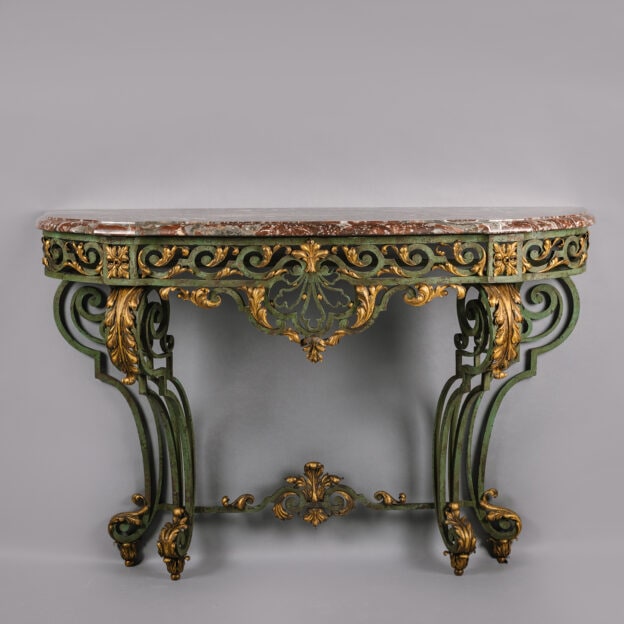




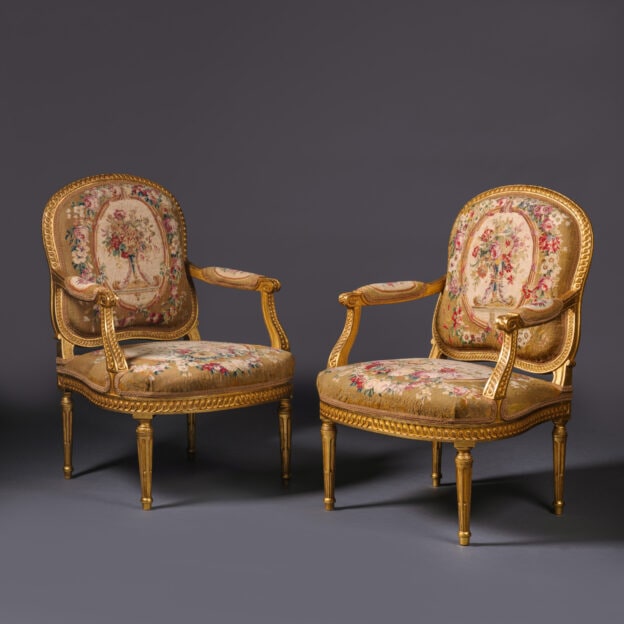
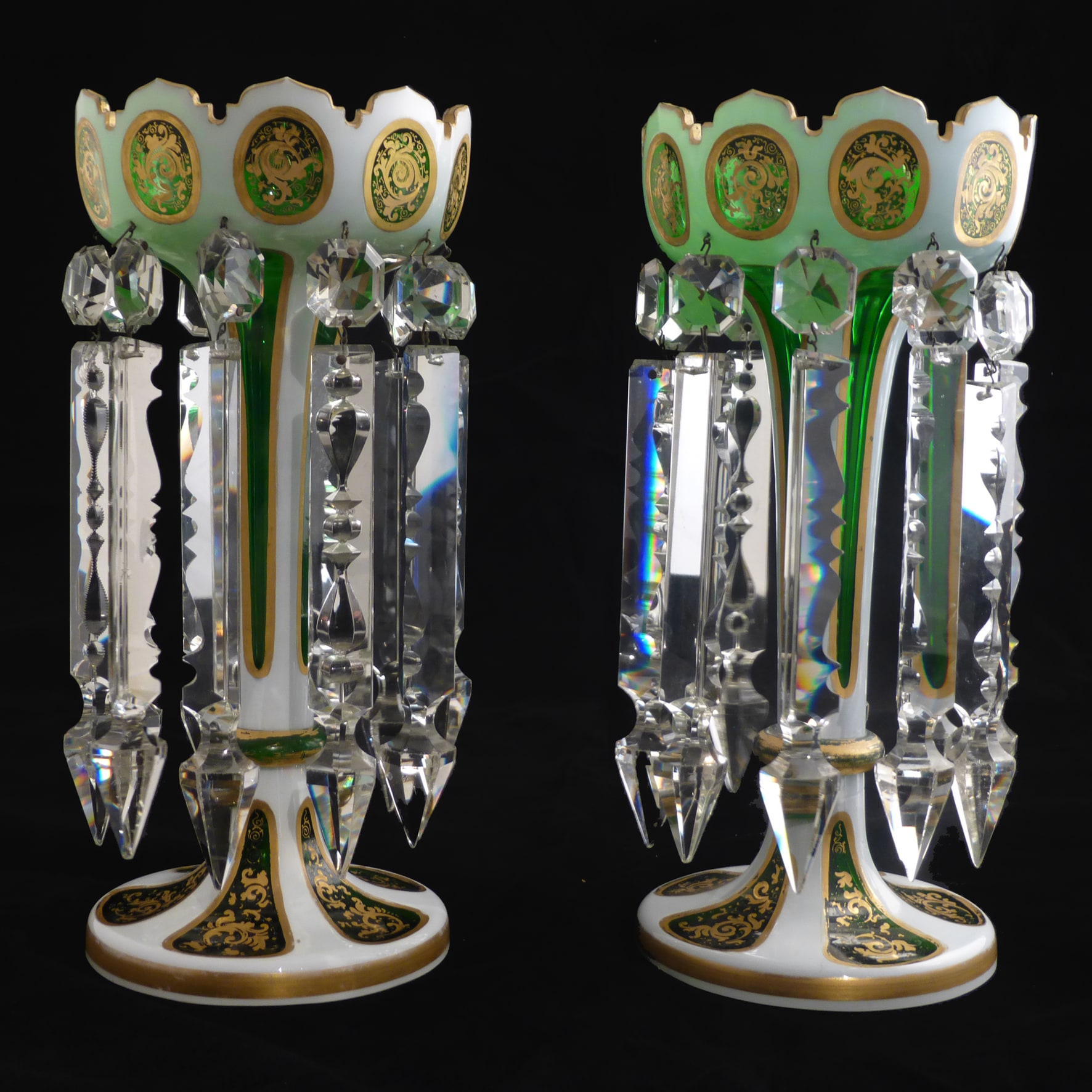

 Print
Print